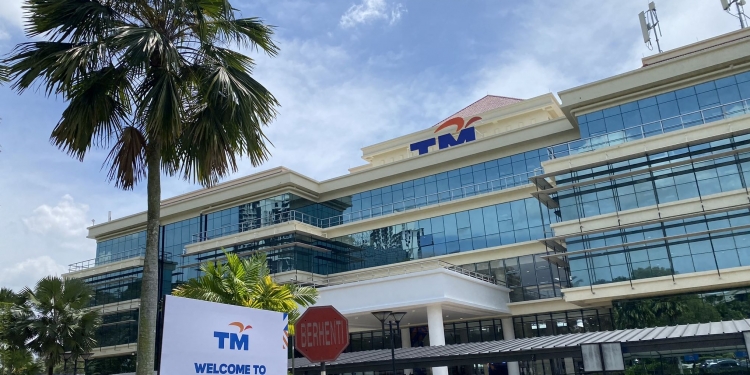Following our recent post on TM’s new 2023 Reference Access Offer (RAO) to comply with the new Mandatory Standard on Access Pricing, TM has reached out to us to clarify several wholesale pricing concerns. In the original report, we highlighted that the new RAO issued by TM on Friday had tiered pricing and access seekers would have to commit to a minimum of 9Tbps to get close to the MSAP rates published by the Malaysian Communications and Multimedia Commission (MCMC).
TM: All HSBB access seekers enjoy price reductions across the board
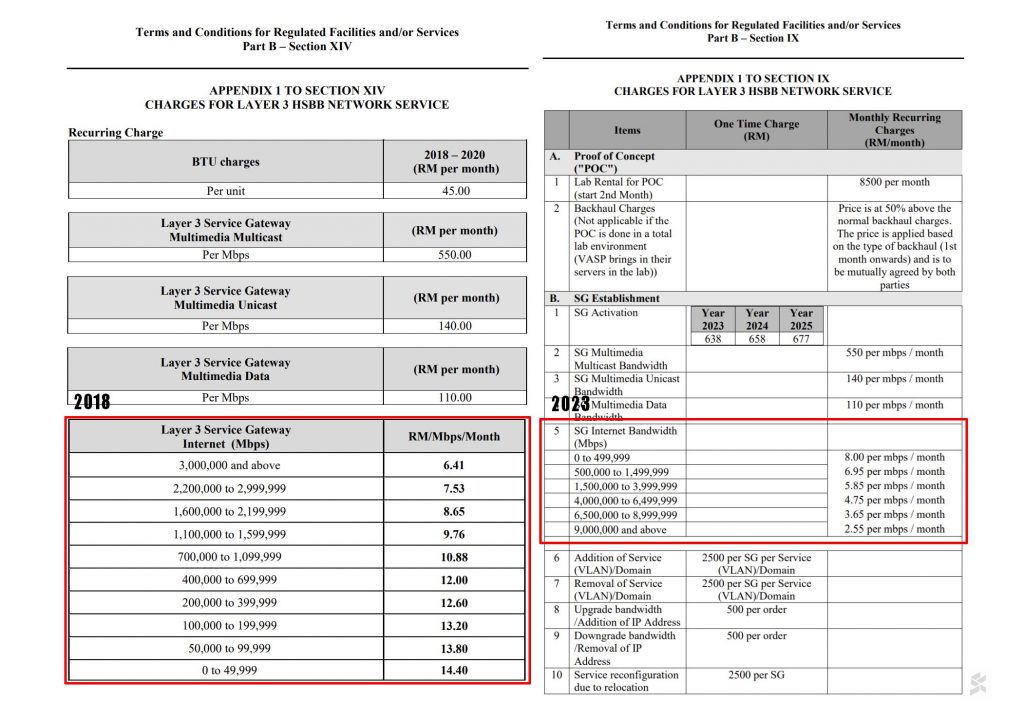
In a response to us, TM said the 2023 RAO offers clear and improved rates at each tier compared to the current RAO issued in 2018 which provides a different perspective as shared with SoyaCincau. When comparing the new 2023 to the previous 2018 RAO rates, there is a clear improvement of at least 40% of Wholesale Service Gateway rates and it gets better as the volume increases.
TM has also provided us with the previous 2018 RAO as shown above. It added that the 2023 RAO offers a clear improvement over the current 2018 RAO from RM14.40 to RM8.00 at the highest tier. At the same time, most access seekers may move beyond the highest 2023 RAO threshold and will enjoy even better rates. This will provide access seekers with more flexibility to offer attractive packages.
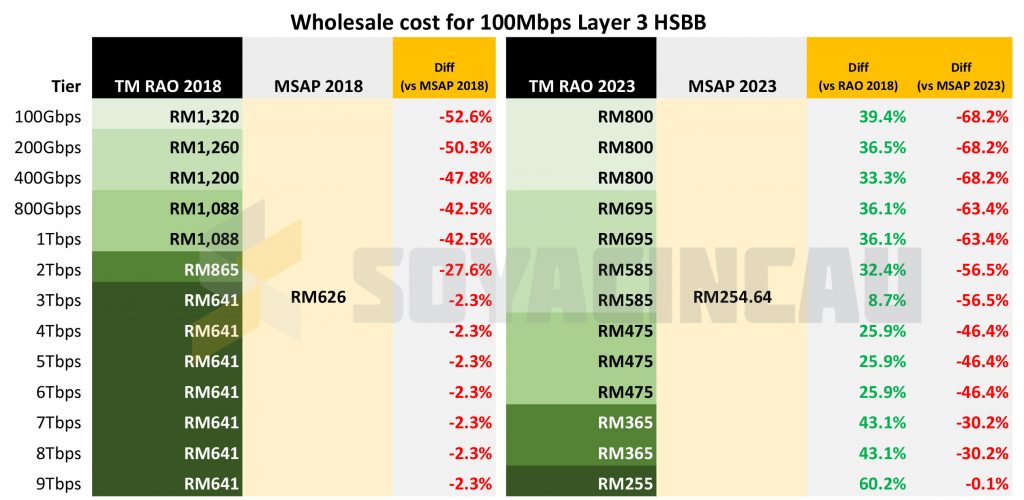
If we put the tiers and cost per Mbps from both RAO (2018 vs 2023) side by side, we do find that TM does offer reduced pricing across the board. For example, a provider with low monthly usage of 100Gbps would have to pay RM1,320 for wholesale 100Mbps versus RM800 with the new RAO 2018, which is a reduction of 39.4%. Meanwhile, providers with 3Tbps utilisation would pay RM626 for wholesale 100Mbps with RAO 2018 versus RM585 with RAO 2023, which is a reduction of 8.7%.
In case you’re wondering, 100Mbps wholesale doesn’t translate to 100Mbps retail prices for consumers as it depends on the contention ratio for each fibre provider. Since not all subscribers will fully maximise their subscribed bandwidth at the same time, providers would only require enough bandwidth to support their peak total network utilisation with perhaps some extra headroom for potential spikes. For example, if a provider has ten 100Mbps subscribers and the peak total utilisation is 300Mbps, they would only need 300Mbps instead of 10x 100Mbps (1Gbps).
TM’s RAO rates are still higher than MCMC’s MSAP schedule
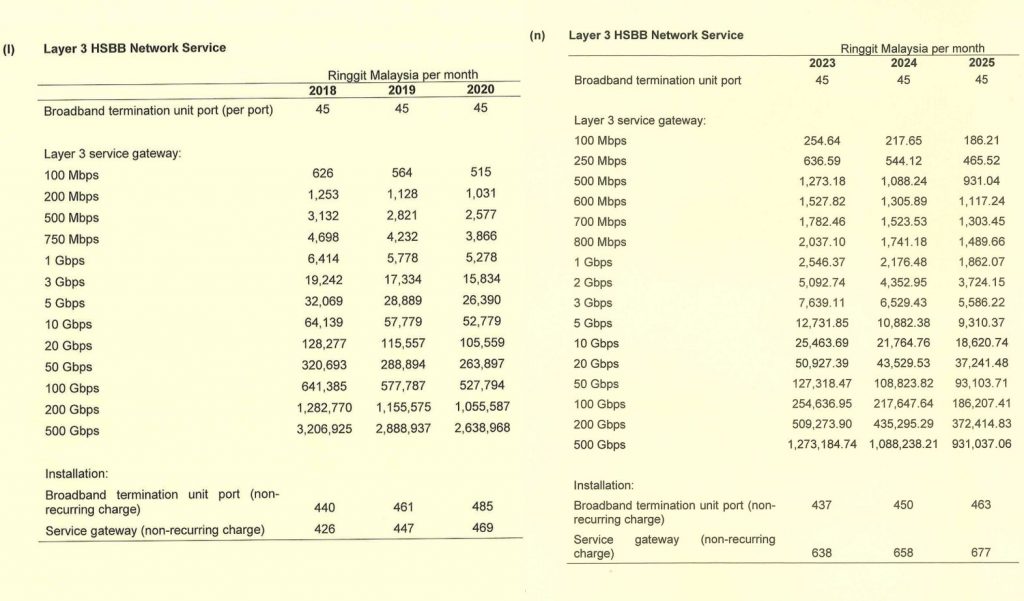
While it is clear that all access seekers on TM HSBB will eventually pay less regardless of which tier they are in, the rates are still higher than the mandatory rates set under the MSAP. As we’ve highlighted in the previous post, the wholesale pricing in the RAO issued by TM is higher than MCMC’s MSAP which contains a scheduled price reduction across 3 years. For example, the 100Mbps pricing for HSBB Layer 3 Service Gateway is set at RM254.64/month for 2023, RM217.65/month for 2024 and RM186.21/month for 2025. TM has also confirmed that their RAO will be the same until 2025.
When we asked TM about the price gap versus the MSAP, they said their wholesale pricing is not actually higher as they are tiering it for better economics. TM says they have applied the MSAP of RM2.55 per Mbps into the RAO and the price will be reduced further as the volume increases over the years. At the moment, RM2.55 per Mbps is the lowest price in the new RAO for 9Tbps and above.
TM insists all players will gain from the new RAO, not just Unifi
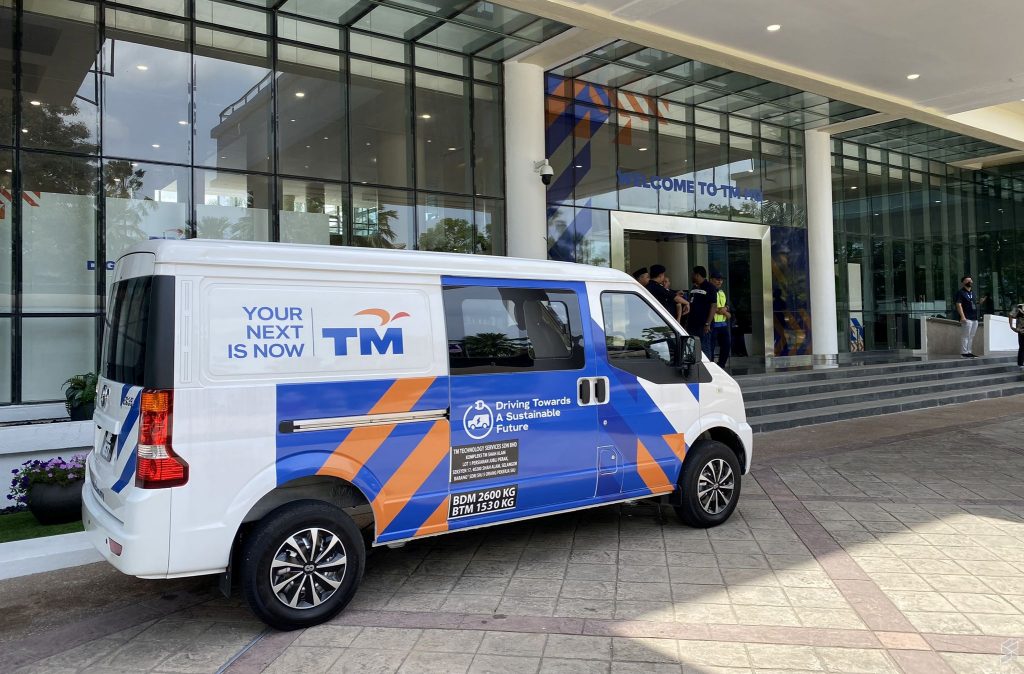
In the original post, we reported that Unifi is set to gain the most out of the new RAO as the TM retail brand has the most fibre customers on HSBB with over 3 million fibre subscriptions as of Q1 2023. As a comparison, Maxis has 600,000 fibre customers and CelcomDigi has 107,000 customers in the last reporting period. TM said our claim was not true as the new 2023 RAO offers clear and improved rates at each tier as compared to the previous RAO, therefore not only Unifi but other Access Seekers too will also gain from the new RAO rates.
It is worth noting that in the previous 2018 RAO, access seekers would only need to commit to 3Tbps per month to enjoy the lowest cost per Mbps rate. However, for the new 2023 RAO, access seekers would need to triple their commitment to 9Tbps in order to enjoy the lowest RM2.55 per Mbps rate. Essentially, players that are currently enjoying the lowest RM6.41/Mbps rates with 3Tbps utilisation would need to increase their usage by 3x to enjoy the new maximum price reduction of RM2.55/Mbps.
TM can’t disclose the average wholesale usage by access seekers due to confidentiality reasons. However, the fact remains that Unifi is still the largest fibre broadband player in the field and they are in the best position to achieve the highest tier to enjoy the lowest cost per Mbps. On the flip side, this could also mean all access seekers would be incentivised to bump up their consumer fibre broadband offering with higher speed at a lower cost if they want to enjoy the benefits of the higher tier.
According to TM, ultimately they are hopeful for their broadband access seekers to offer more attractive retail prices. After the publication of the RAO, there will be further negotiations before the access agreement is signed. The final impact on the fibre broadband prices will vary depending on each telco’s retail strategy. MCMC said recently that consumers can expect a reduction in broadband services after access agreements have been concluded in September 2023.
Related reading
- MCMC on MSAP: Expect price reduction for broadband services after September 2023
- Four months have passed but where’s the promised price reduction for broadband in Malaysia?
- TM releases new HSBB pricing to comply with MSAP, but it may not significantly cut broadband prices for all

